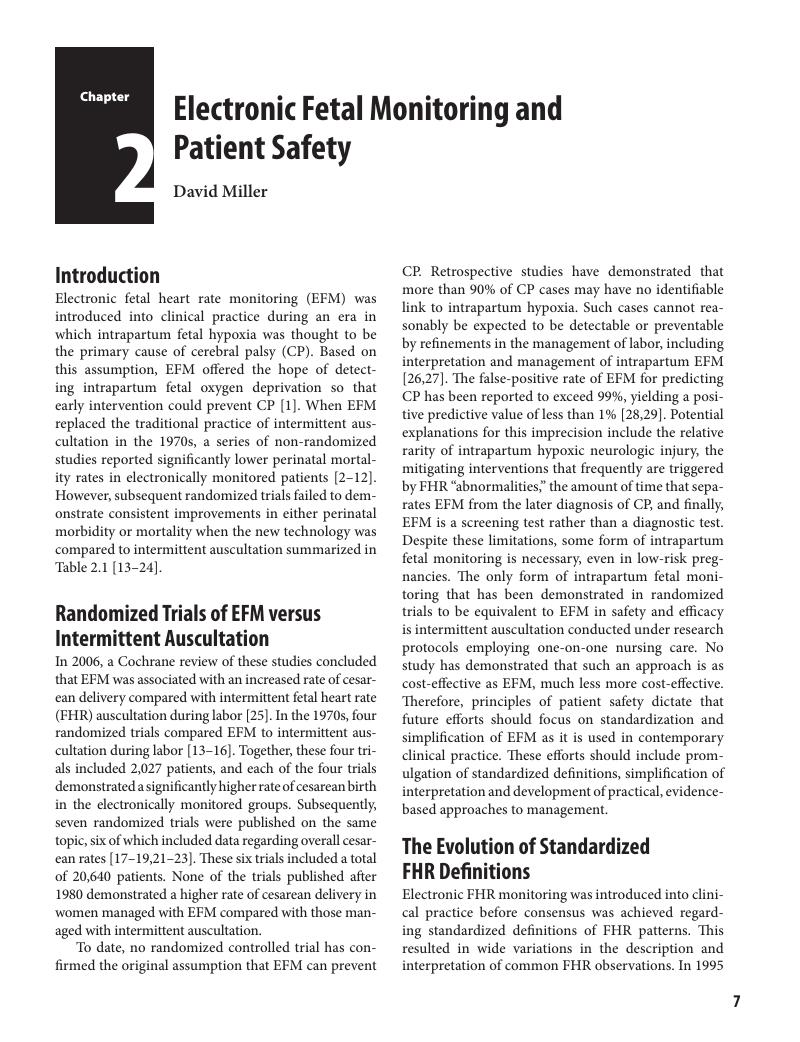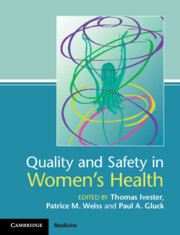Book contents
- Quality and Safety in Women’s Health
- Quality and Safety in Women’s Health
- Copyright page
- Contents
- Notes on Figures and Tables
- Contributors
- Preface
- Chapter 1 Office Safety
- Chapter 2 Electronic Fetal Monitoring and Patient Safety
- Chapter 3 Patient Safety in the Outpatient Setting
- Chapter 4 Principles for the Safe Use of Electrosurgery
- Chapter 5 The Obstetric-Gynecologic Hospitalist
- Chapter 6 Transparency and Disclosure
- Chapter 7 Surgical Checklists
- Chapter 8 What is a High-reliability Organization?
- Chapter 9 Powerful Tools for Quality Improvement
- Chapter 10 Simulation and Drills
- Chapter 11 Rapid Response in Obstetrics
- Chapter 12 Regulatory and Legal Implications
- Chapter 13 Patient Safety
- Chapter 14 Safety Programs in a Community Hospital
- Chapter 15 Improving Perinatal Safety in an Integrated Healthcare System
- Chapter 16 Fatigue and Safety
- Chapter 17 Just Culture in Women’s Health Services
- Chapter 18 Medication Safety in Obstetrics and Gynecology
- Chapter 19 Improving Patient Safety Through Team Training
- Chapter 20 A Systems-based Approach to Shoulder Dystocia Safety
- Chapter 21 Creating a Learning Culture
- Chapter 22 Safe Patient Handoffs
- Chapter 23 Using Clinical Scenarios to Teach Patient Safety
- Chapter 24 Quality and Safety in Medical Education
- Index
- References
Chapter 2 - Electronic Fetal Monitoring and Patient Safety
Published online by Cambridge University Press: 15 March 2018
- Quality and Safety in Women’s Health
- Quality and Safety in Women’s Health
- Copyright page
- Contents
- Notes on Figures and Tables
- Contributors
- Preface
- Chapter 1 Office Safety
- Chapter 2 Electronic Fetal Monitoring and Patient Safety
- Chapter 3 Patient Safety in the Outpatient Setting
- Chapter 4 Principles for the Safe Use of Electrosurgery
- Chapter 5 The Obstetric-Gynecologic Hospitalist
- Chapter 6 Transparency and Disclosure
- Chapter 7 Surgical Checklists
- Chapter 8 What is a High-reliability Organization?
- Chapter 9 Powerful Tools for Quality Improvement
- Chapter 10 Simulation and Drills
- Chapter 11 Rapid Response in Obstetrics
- Chapter 12 Regulatory and Legal Implications
- Chapter 13 Patient Safety
- Chapter 14 Safety Programs in a Community Hospital
- Chapter 15 Improving Perinatal Safety in an Integrated Healthcare System
- Chapter 16 Fatigue and Safety
- Chapter 17 Just Culture in Women’s Health Services
- Chapter 18 Medication Safety in Obstetrics and Gynecology
- Chapter 19 Improving Patient Safety Through Team Training
- Chapter 20 A Systems-based Approach to Shoulder Dystocia Safety
- Chapter 21 Creating a Learning Culture
- Chapter 22 Safe Patient Handoffs
- Chapter 23 Using Clinical Scenarios to Teach Patient Safety
- Chapter 24 Quality and Safety in Medical Education
- Index
- References
Summary

- Type
- Chapter
- Information
- Quality and Safety in Women's Health , pp. 7 - 24Publisher: Cambridge University PressPrint publication year: 2018



